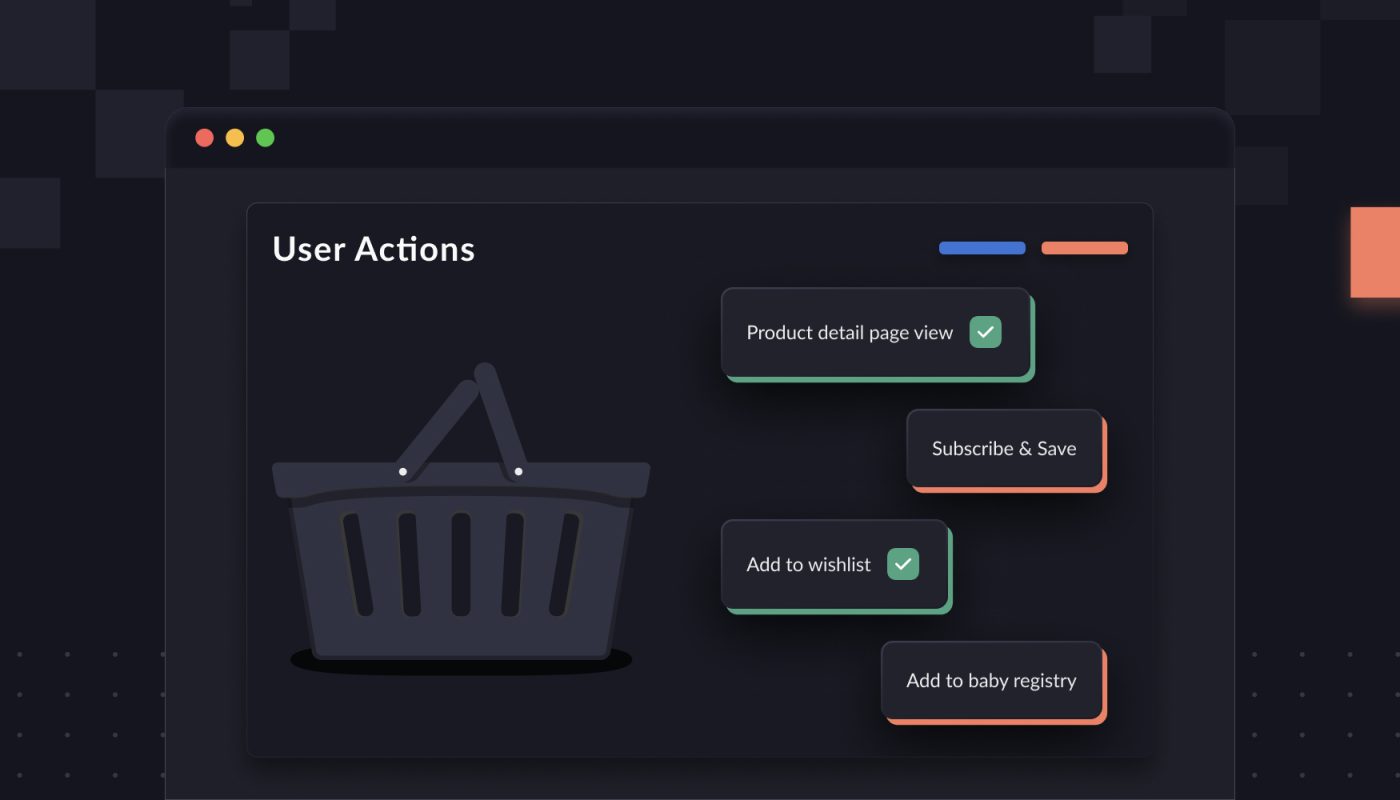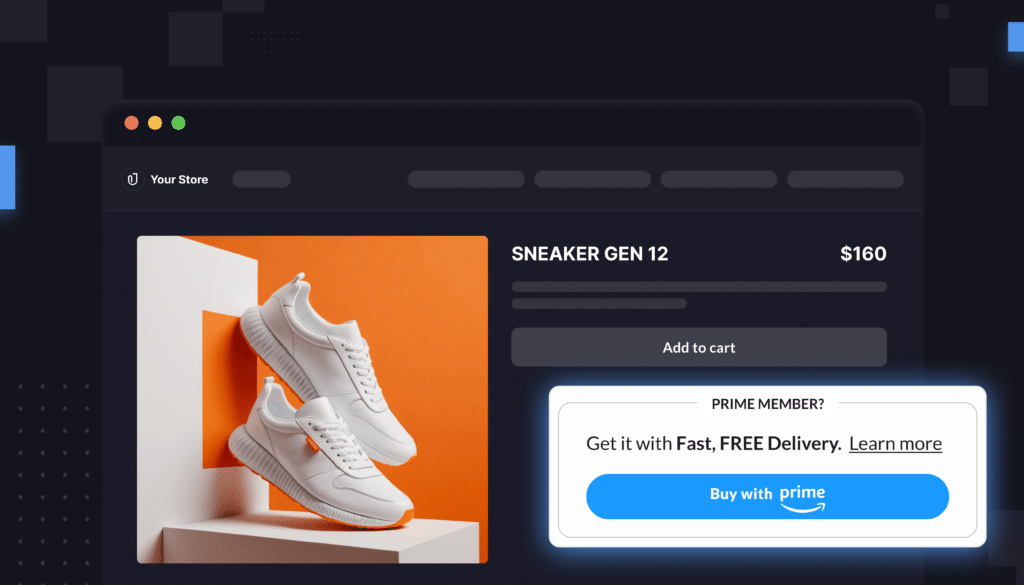Want to keep shoppers from becoming overexposed to your ads? Want to measure when someone adds your product to a wishlist or a baby registry?
All of this is now possible in Amazon Marketing Cloud (AMC), Amazon’s newest analytics tool.
Over the last month here at Intentwise, we have hosted a series of webinars on all things Amazon Marketing Cloud. We had some great guests:
- Tips, Tricks, and Pitfalls of AMC (with Jack Lindberg of The Mars Agency)
- Actionable Use Cases of AMC (with Matt Wiklund of Ad Advance)
If you missed the webinar series, or you don’t have time to watch the full videos, we wanted to highlight a few lessons learned.
These takeaways showcase the vast potential of AMC—as well as some common errors and mistakes you could make when getting started.
#1: Forget sales: Track all kinds of shopper events
Let’s start with the basics. One of the obvious benefits of AMC is the ability to track sales conversions.
That’s a great use case—but there are all kinds of events, beyond just sales, that you can measure.
In AMC, you can see when a customer:
- Views your product detail page
- Visits your customer reviews page
- Adds a product to a baby registry
- Adds a product to their shopping cart
- Adds a product to a wedding registry
- Adds a product to their wishlist
Plus, there’s more: As we discussed recently, you can also track Subscribe & Save conversions in AMC.
#2: Avoid overexposure to ads
Are you worried that your ads might be hitting the same people over and over again? Overexposing customers to ads amounts to a whole lot of wasted spend.
AMC offers an elegant way to set frequency caps with its custom audiences feature.
For the uninitiated: AMC lets you create an audience based on the result of any query, then target that audience in DSP.
As is true with any audience, you can choose to include or exclude them from your ad targeting. Excluding customers is a strategic way to better control your ad spend.
Let’s say you decide that you don’t want customers to see your ads more than 7x in a single day. In AMC, simply create an audience of people who have viewed your ads 7+ times in the last 24 hours. Then, subtract that audience from DSP.
The great thing about AMC custom audiences is that they automatically refresh. Shoppers will cycle in and out of that audience as the number of ads they’ve viewed shifts.
This creates a kind of granular, dynamic targeting that you can’t find anywhere else in the ad ecosystem. Using audience exclusions, you can dial in your campaigns and ensure your spend is extremely efficient.
#3: Beware of null values
Now, let’s get a little bit more technical.
At the simplest level, AMC offers a way to unify shopper activity across all of Amazon. AMC joins together data sets from both DSP and sponsored ads, along with retail data.
To do this, Amazon tracks shoppers through anonymized user_ids. If the same user_id appears on both a DSP ad and a Sponsored Products ad, that means the same customer viewed that DSP ad and that Sponsored Products ad.
The problem is, sometimes Amazon knows an ad impression happened, but it can’t figure out which shopper viewed your ad.
The end result is that, in AMC, the user_id for that DSP ad impression will show up as “null.”
Why does this happen? There two main ways:
- The shopper was not logged in. If a shopper was logged out of their Amazon when they viewed a sponsored ad, Amazon may not be able to track who that shopper is.
- You used non-audience targeting. When you run a DSP ad, you can target based on an audience, or you can take more novel approaches. You might use geo-targeting or contextual targeting, or you might buy an ad from a private marketplace, like a streaming service.
In these cases where you don’t rely on a DSP audience, Amazon sometimes loses track of the identity of the ad viewer.
So what do you do when you run into a null user_id? Null values are inevitable in AMC. The important thing is to create a plan for dealing with them.
You should either filter out null user_ids entirely, or create a system that separates out null vs. non-null user_ids.
If you don’t do this, you can mess up your overall stats. When you join tables with null user_IDs, you’ll get a bunch of impressions that have no user_ID. That can skew account-level metrics like conversion rate.
#4: Run count queries to determine your custom audience
The ability to create custom audiences is one of the most powerful use cases in AMC.
The one limitation? To be viable, your audience needs to include at least 2k unique shoppers. That means your custom audience can’t be too narrow.
Want to know if your proposed custom audience is big enough for AMC to run it? There’s a simple way to figure this out: Run a simple count query in AMC, and see if it returns a group of shoppers larger than 2k.
These sorts of count queries require knowledge of SQL to write. If you have SQL knowledge, and you only need to create an account query occasionally, it might be manageable.
But what if you need to run these queries at scale, across many different accounts? Let’s say you’re an agency that wants to focus on Subscribe & Save conversions for all of your clients.
It’s a pain to write and run separate count queries for every single account in your arsenal. What if you had 100 clients, each of whom has 3 sub-brands? That means manually running 300 queries every week.
Using a tech partner like Intentwise, you can schedule queries to run across hundreds of AMC instances at once. You can set all 300 of those queries to run at 1 a.m., for instance, so the data is always ready when you wake up in the morning.
This can’t be done in the regular AMC console.
That’s just one piece of our forthcoming AMC tool. Stay tuned for more in the coming weeks!








